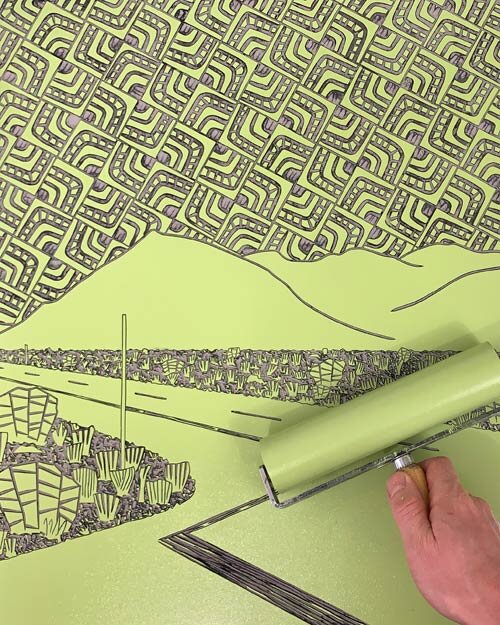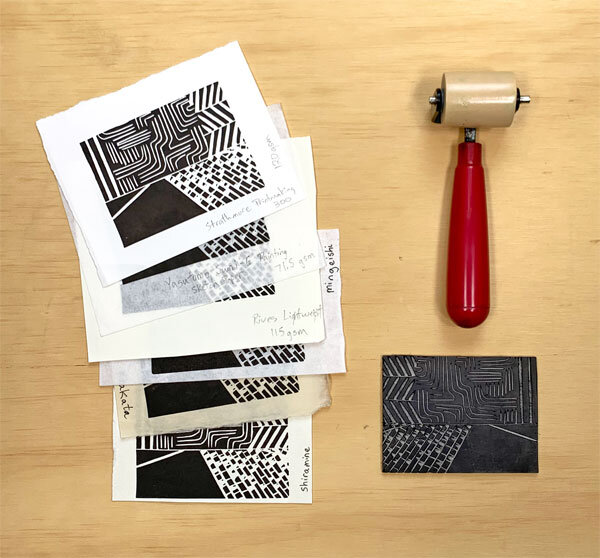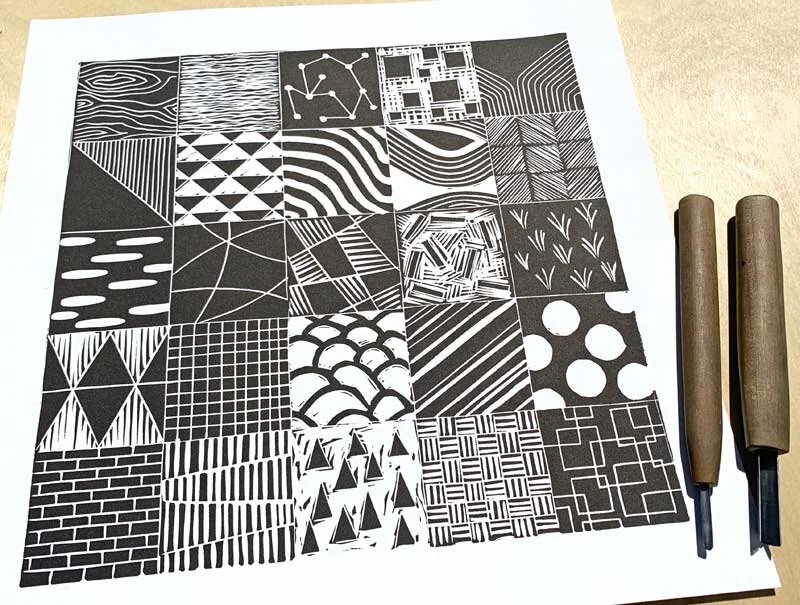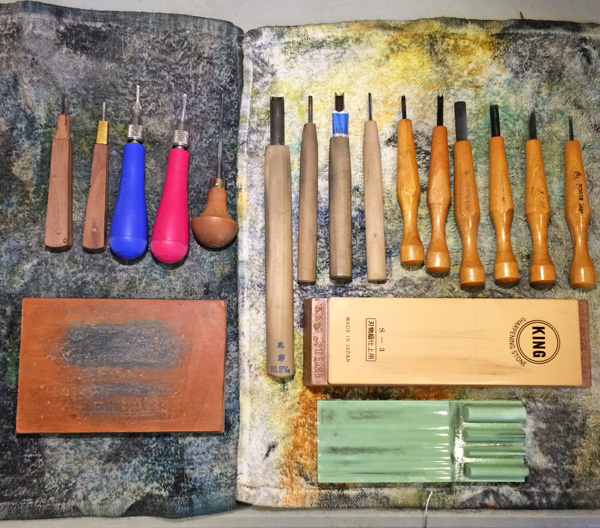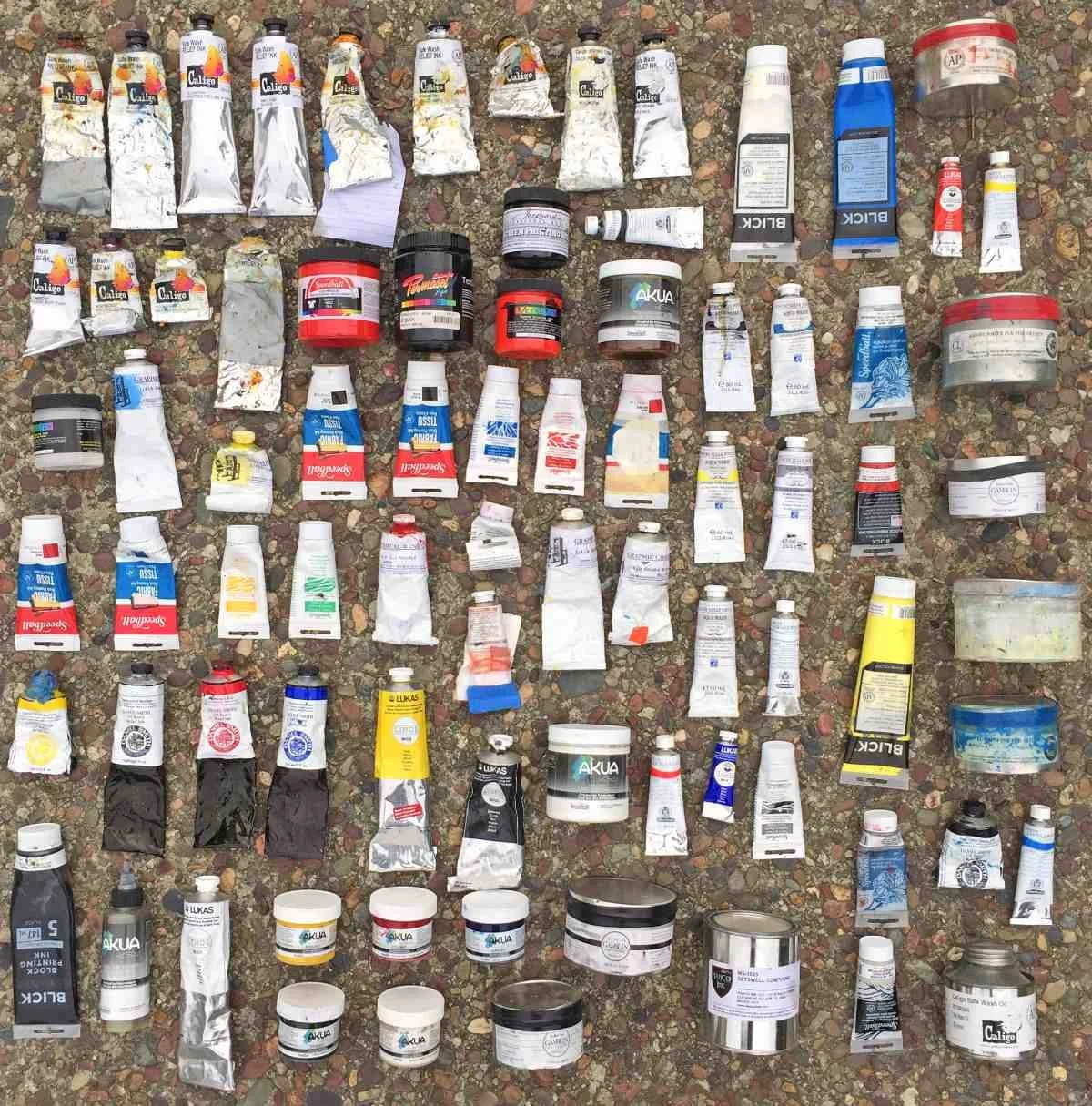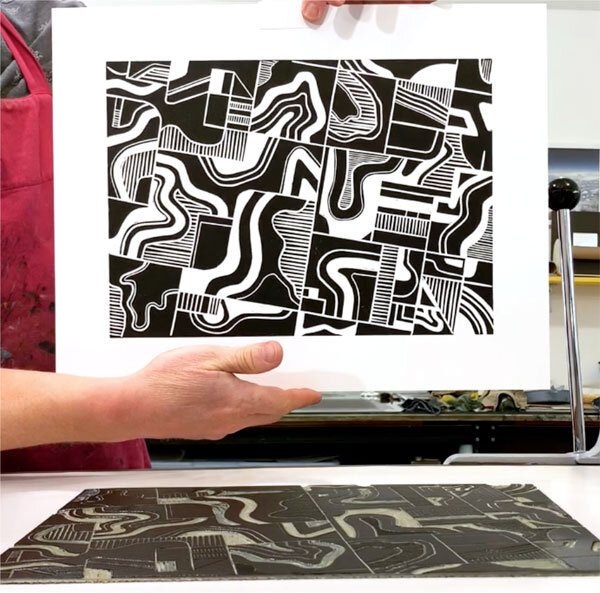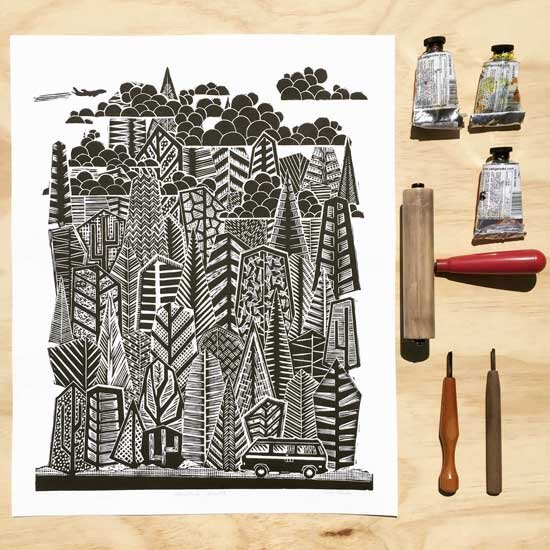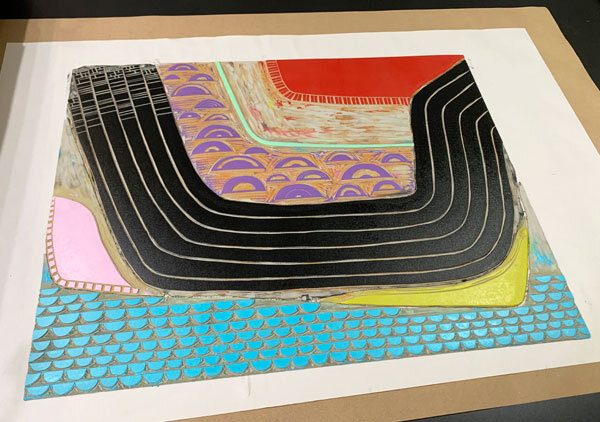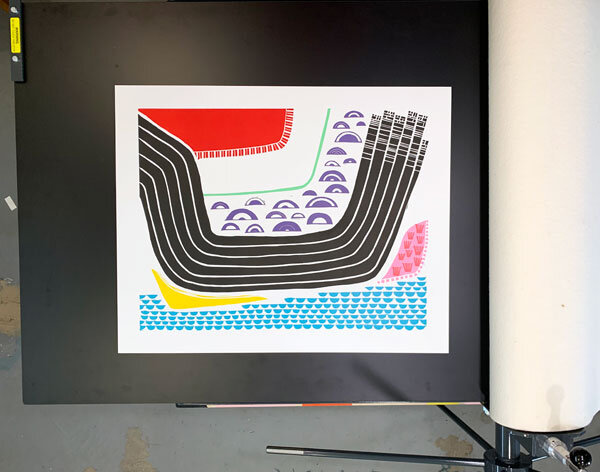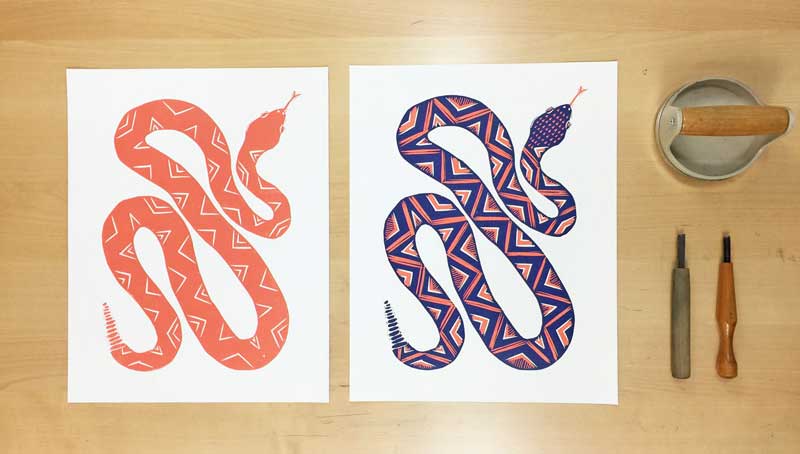I’ve started a series of abstract aerial landscape linocut prints that I’ve been working on since last year. They’re original artworks made from hand-carved linoleum blocks and I have three in the series so far.
As I’ve talked about before, I try to take a lot of photos out of the airplane window every time I fly. I love that view. Earlier this year, I was reading a library book about Georgia O’Keeffe and was surprised to find out that she too was inspired by views from the airplane window.
I’ve titled the series, “Aloft,” and these are the first three abstract lino prints.
This is a short video of me printing Aloft II from linoleum blocks on an etching press in my printmaking studio. I used the same process for each of the prints in the series.
I’ve done a lot of work drawn from my passion for plane flight - you might be interested in these past posts:

